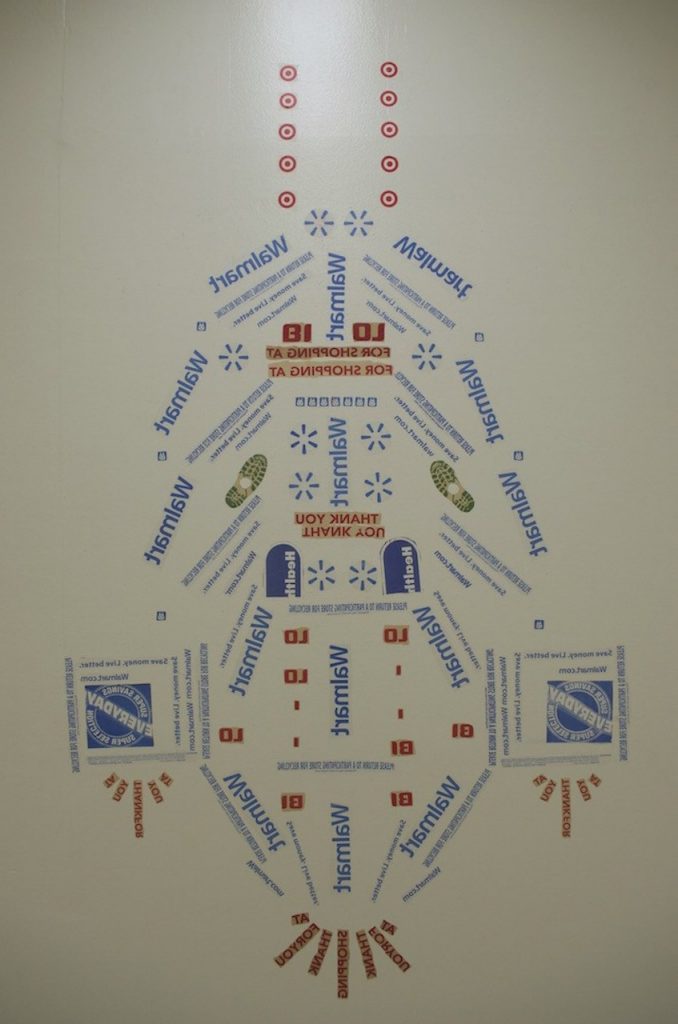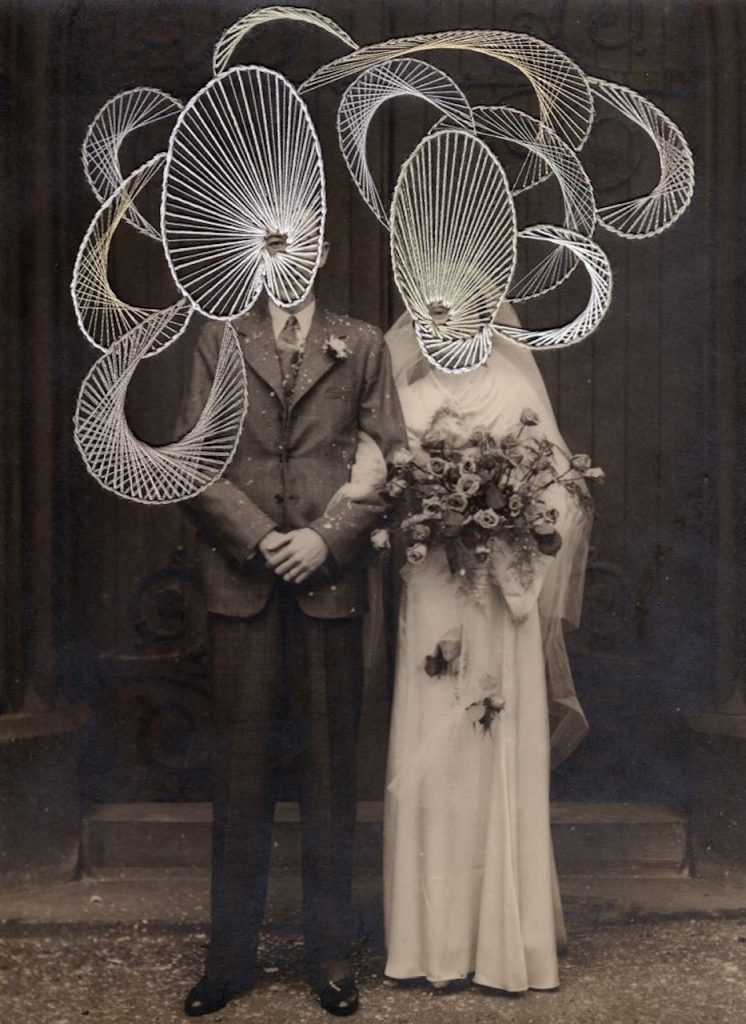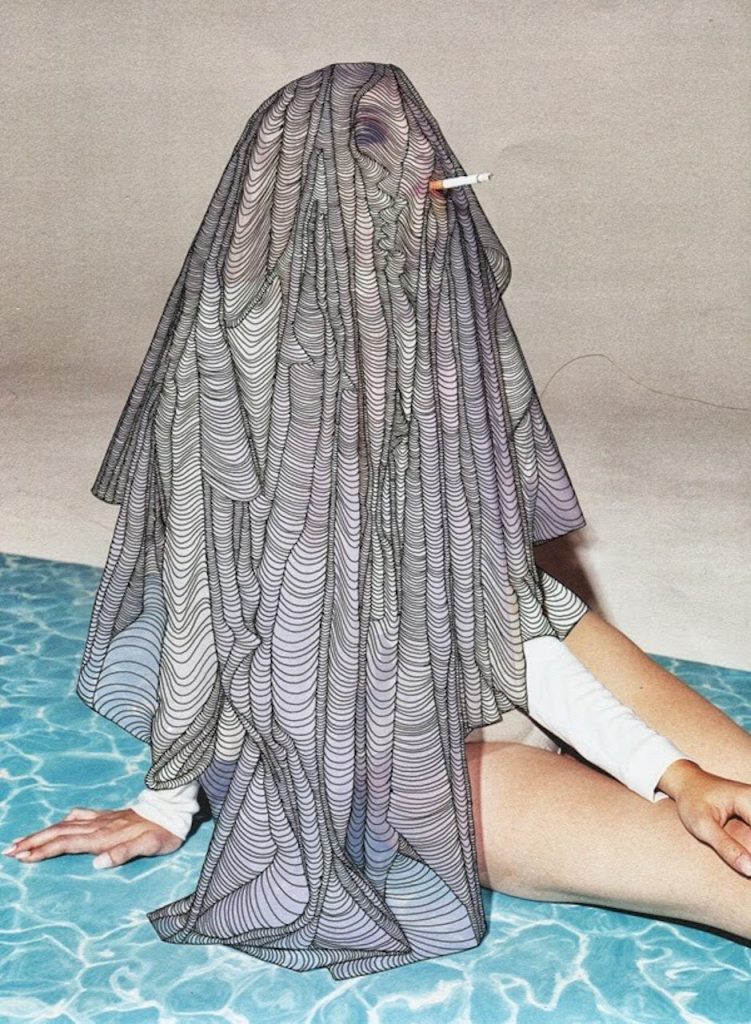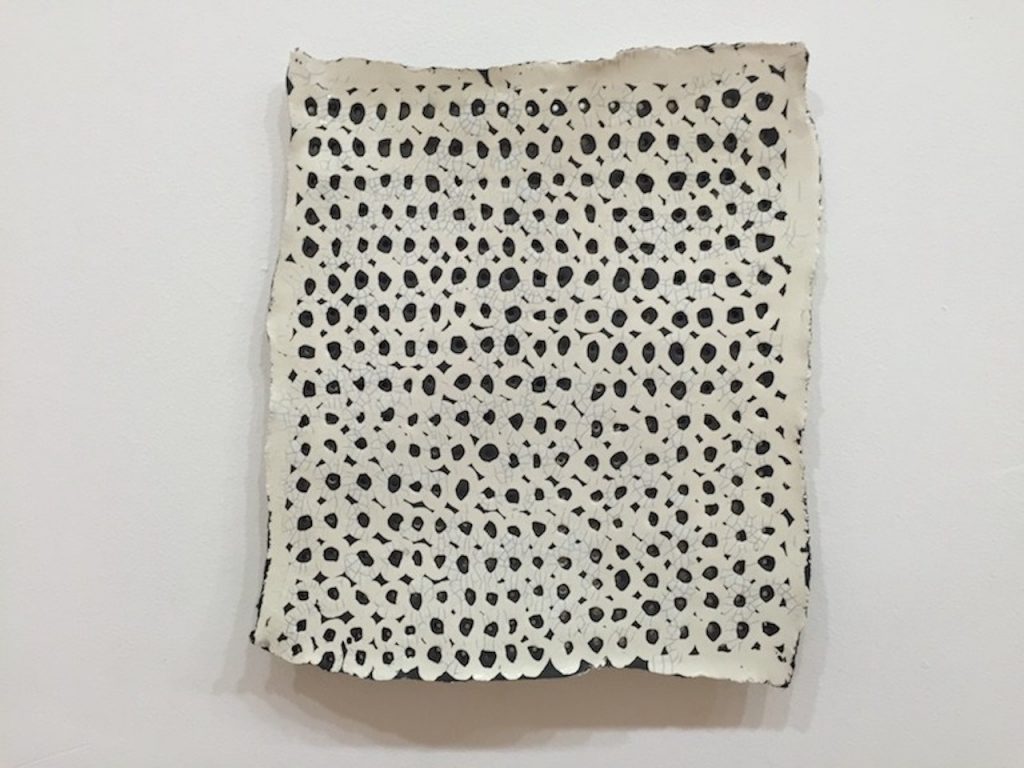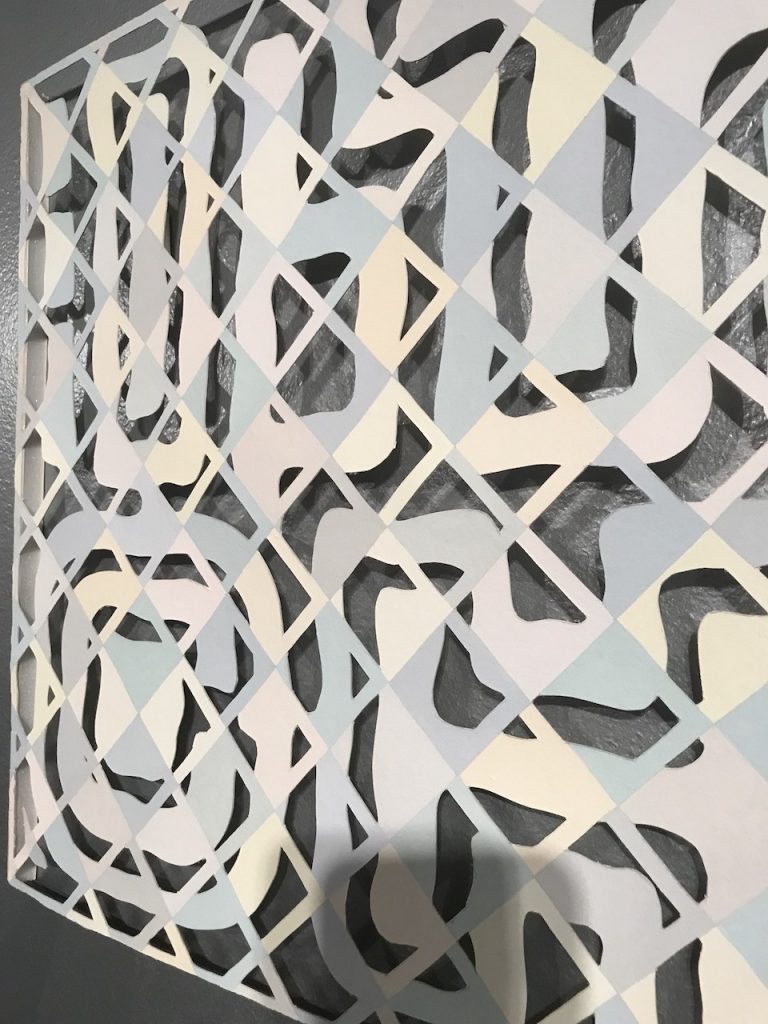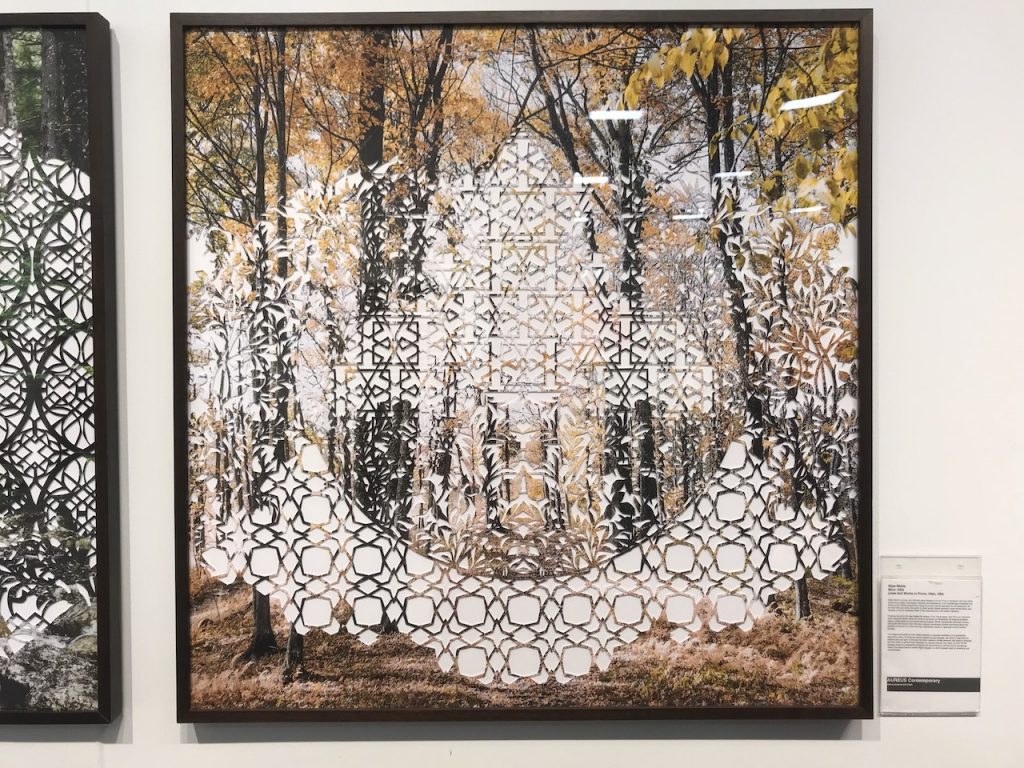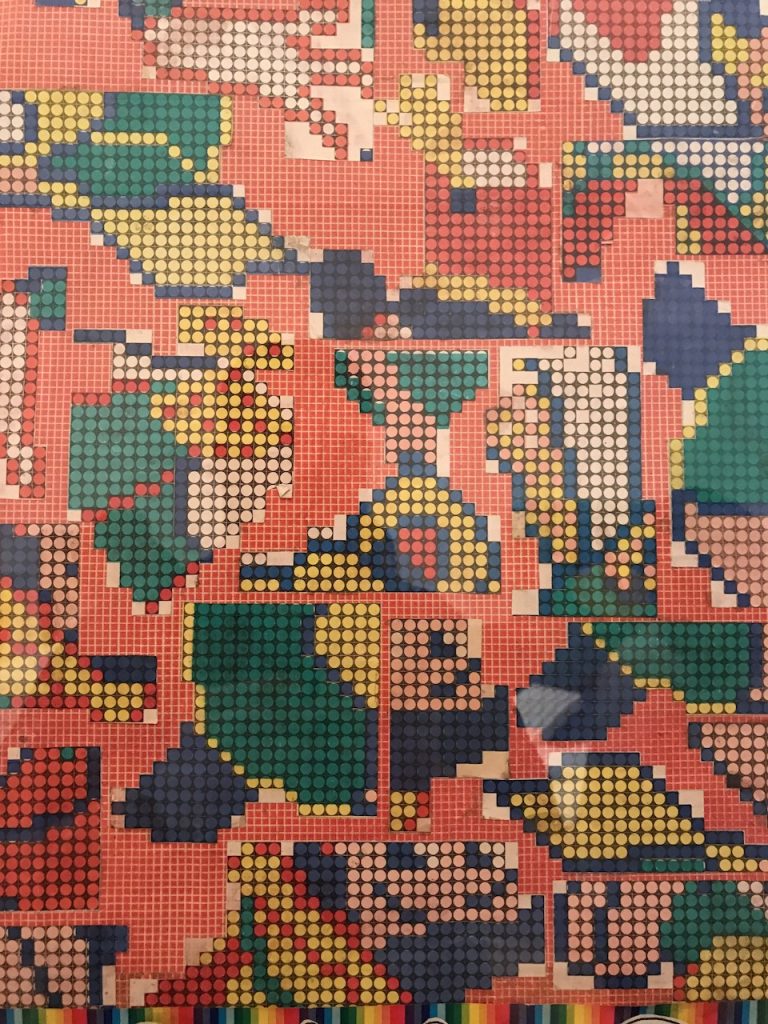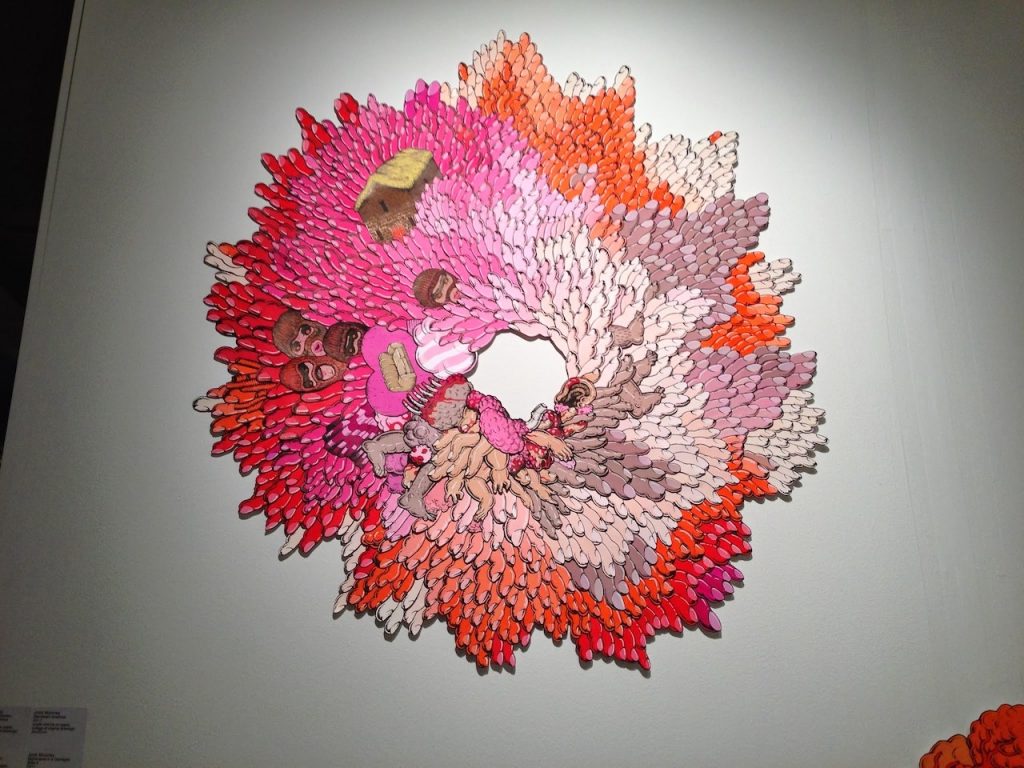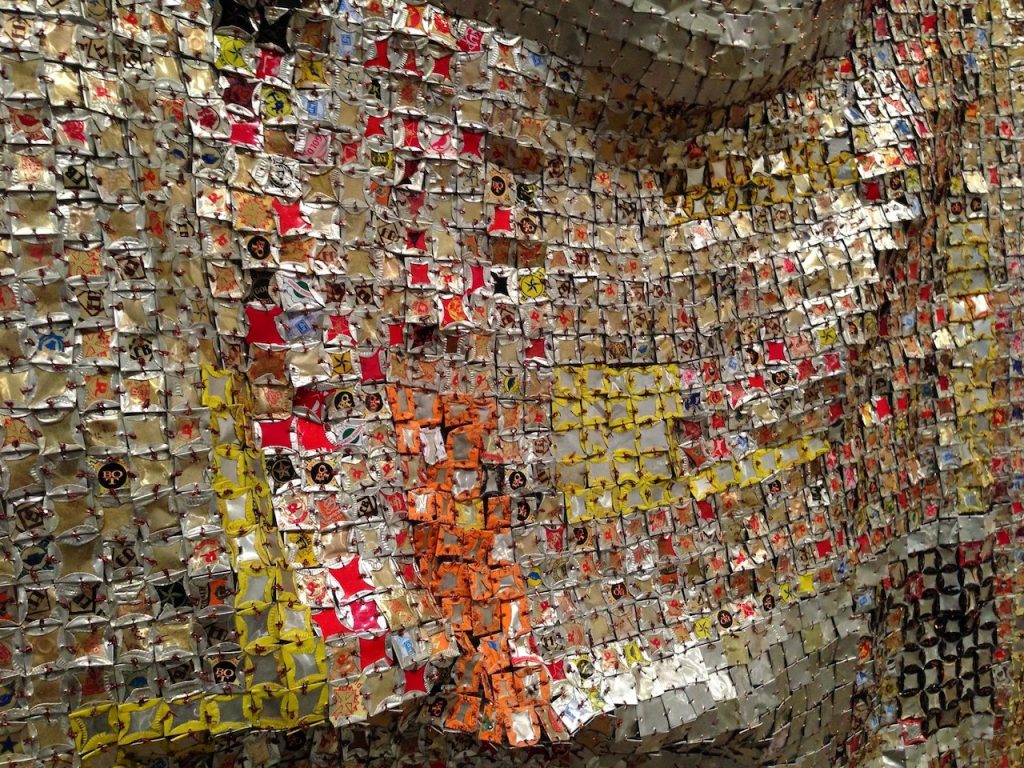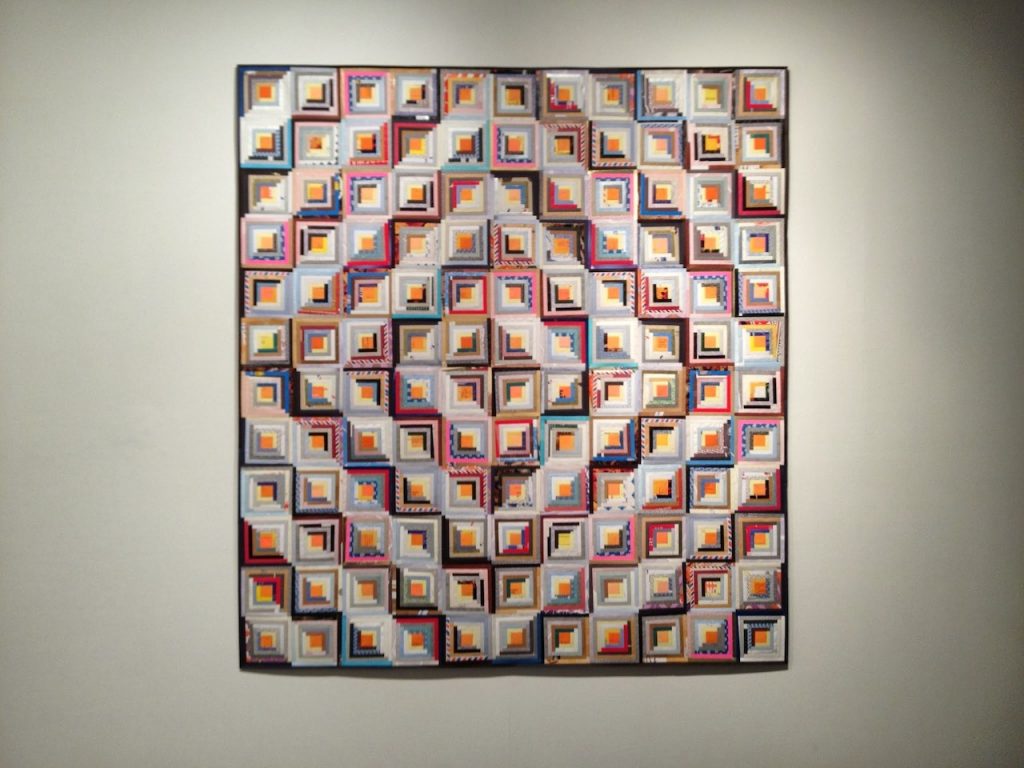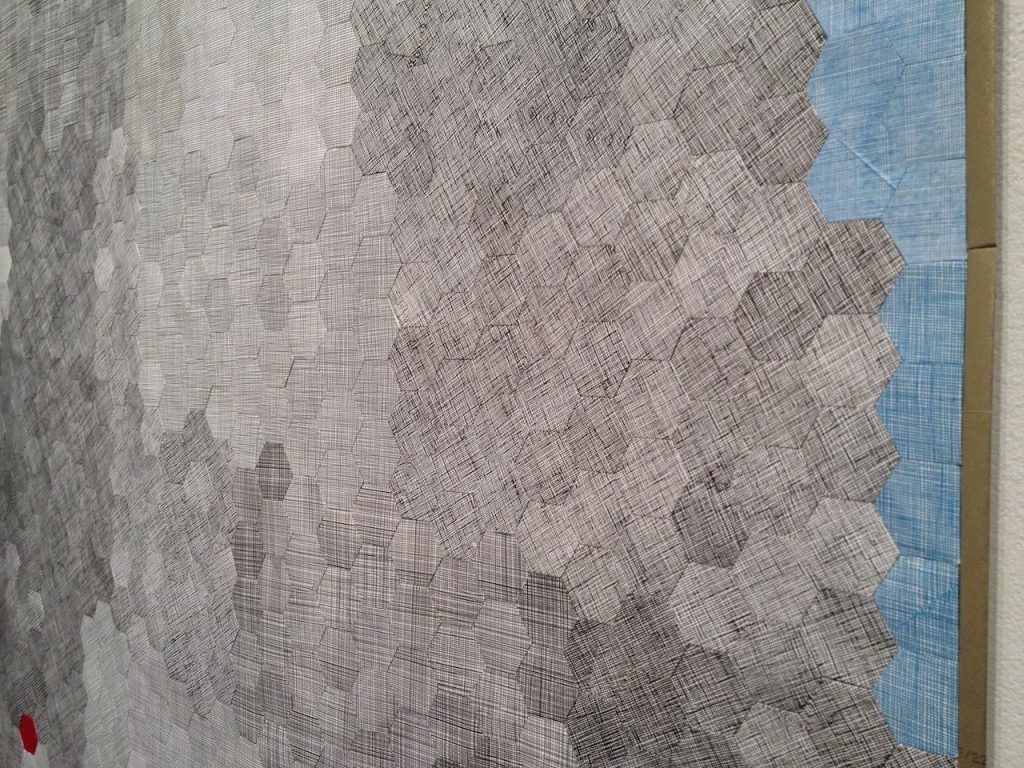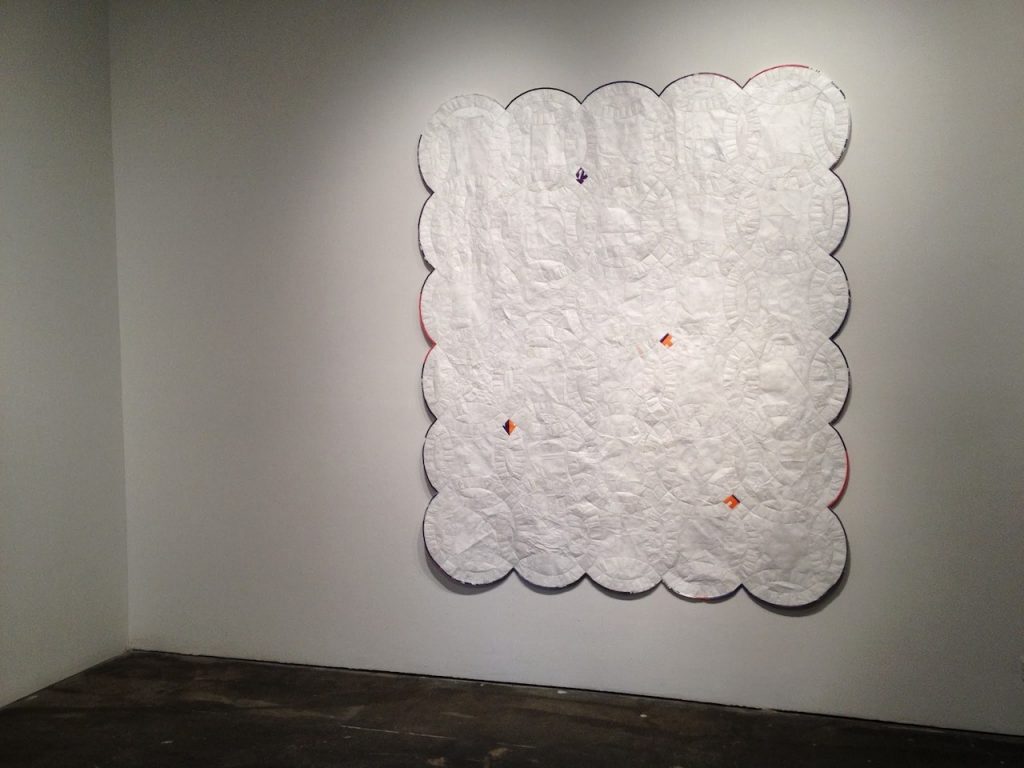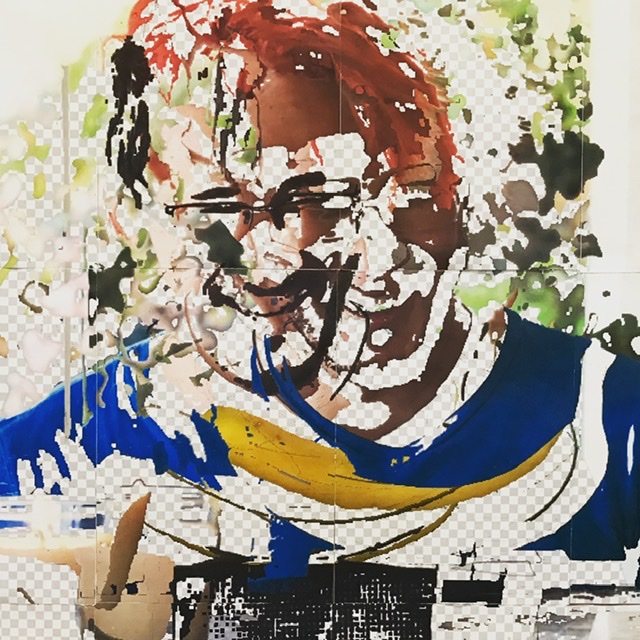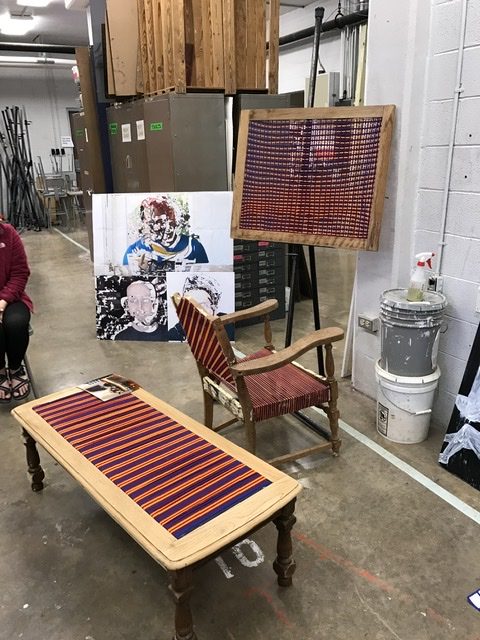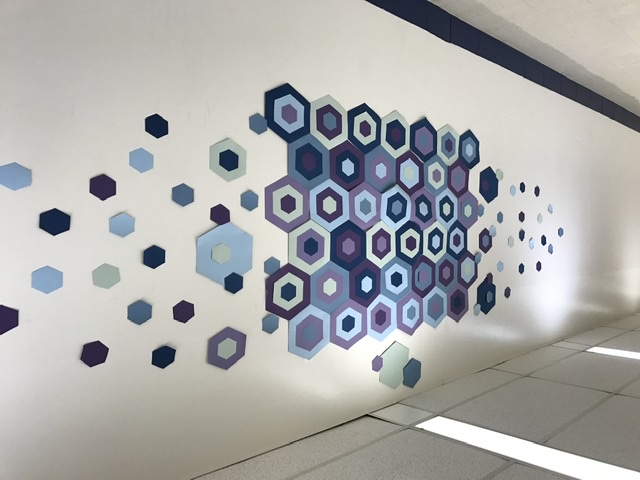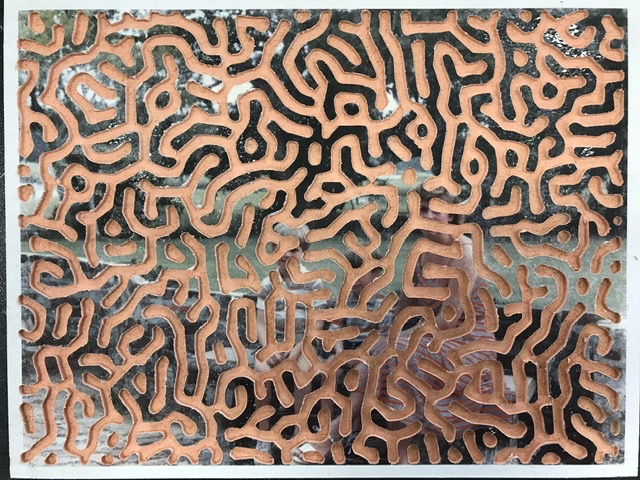
Learning Objectives
- Students will be able to understand and apply the principles of “patterning” as applied to two-dimensional art.
- Students will be able to demonstrate and understanding of the concepts of “design process,” “module,” and “pattern.”
- Students will be able to demonstrate an understanding of part-to-whole relationships that can result from the considered design of modules and their application to different patterning schemes.
- Students will be able to demonstrate an understanding of the universal aspects of patterning as found in cultures throughout the world.
Project Description
For this assignment you will be creating a non representational (no images) work of art based on pattern. I encourage you to take risks, try new materials and avoid the cliché – no paint samples from Home Depot, no beer bottle caps decorating your furniture, no drawings or paintings. A successful project will explore a new material, fail a little, learn from those failures and create a patterned work of art. Your work does not need to mount to a piece of pasteboard or canvas but could be attached to your wall, draped over a piece of furniture, hung from the trees…
Project Considerations
Pattern is an orderly arrangement of things forming a consistent or characteristic arrangement or sequence. While in two dimensional art we can produce patterns comprised of repeated shapes or modules, a pattern can also be any regular rhythm in time or space. Patterns can also be used to create identical shapes or parts. Pattern-makers – from dress-design to boat manufacture – are highly valued for their conceptual and design abilities
Patterns pervade nature. People and plants grow in patterns, and so do spirals and money in the bank. Pendulums move in patterns, as do waves and spinning tops and springs. Sailors are on the lookout for patterns of sea and sky and wind that tell of bad weather. Parents look for behavior patterns in children that spell different kinds of turbulence ahead. Economists look for patterns of spending and saving.
Patterns are essential to perception because if we could not pick out patterns among the sound vibrations we heard or the light vibrations we saw, all the world would be a buzzing white confusion. All animals – and probably plants – have built-in pattern perceivers as part of their innate biological structure. Indeed, pattern perception or pattern recognition is important to the survival of every organism. Our ability to perceive the most subtle of patterns helps us to navigate and understand the world in which we live.
Consider the patterns of clouds; the ways in which water moves; the tracks animals leave; the irregular beating of a heart or the “sticky valve” of a car engine. Each “orderly arrangement of things” allows us to perceive something different about our world. Sometimes the patterns we employ to perceive the world filter out other less familiar patterns, and make us literally blind to new ways of seeing and thinking.
Texture can be understood as simply pattern that is better appreciated with fingers rather than the eyes; textures are really just very small repeated patterns. Very fine patterns or textures feel smooth to the touch. Subtle differences between textures may only be discernable through the sense of touch. Coarser textures may be readily perceived by the eyes–for example, corduroy fabric or the surface of a rasp. When creating a composition that requires intermediary tones, visual texture–such as cross-hatched lines or rubbings (frottage)–can be used to provide interest and richness to a visual field.
Materials
Any materials. Explore paint, marker, pen, cut paper, graphite, foam, tape, string, anything you might have on hand. Take a walk through Home Depot, the Dollar Store, fabric aisle…while wearing a mask of course. Remember – you are looking for materials that can create interesting patterns. I am looking for creativity and a willingness to embrace the unknown.
Directions
Name these slides Project – Modules and Pattern in your Google Slides Presentation.
Project – Modules and Pattern – Part 1
- Create 5 different, original patterns. There are several smartphone and tablet apps that can help you do this. Add these to your Google Slides Presentation.
- Find save digitally 5 patterns that you find particularly interesting. Tell me why you like them.
- Look at the artists, videos and images linked below ad take notes in sketchbook. What interests you? Whats an interesting idea?
- Read over the section on pattern and texture to the right under Elements and Principles.
- Choose one of the options listed below and create at least 4 sketchbook pages of ideas. Upload these to your Google Slides Presentation for discussion with the professor and fellow students.
This assignment can be completed in a variety of ways. Choose one. The primary goal of this assignment is to understand how pattern can be used to create or collapse depth, create texture and create interest through multiple focal points.
- Choose one of the following options for the major portion of this project:
- Using your own original pattens, completely cover unique objects. These objects might be a pair of gloves, something you got from Goodwill, furniture – something unique and interesting. When you are covering the objects you want the pattern that you created to appear as if it is part of the actual object, not just poorly printed paper that has been taped on. Once you have covered your objects, photograph them with the highest resolution possible. Pay special attention to how pattern changes the object or the background. What happens if you have two competing patterns such as one on the object and one in the background? Get creative with this part. It should not look like you have just wallpapered a bunch of objects and photographed them. Once you have photographed your covered objects, use an app like PosterRazor to print the final image/s. You can also use on campus printers or Office Depot’s Blueprint printing service. The final image must be at least 24 x 36 inches.
- Create a quilt with multiple patterns. Research quilt designs and use the patterns you created to help design your quilt. The craftsmanship should be exquisite. You may sew, glue, fold, or weave to create your quilt and the materials are up to you. Quilting takes a lot of time so plan accordingly or recruit volunteers to help. The final quilt must be at least 36 inches..
- Create a collage using patterns as the primary medium. Play with our understanding of depth and perspective using pattern as your primary element. The collage must be at least 36 inches. .
- Come up with something completely different – discuss with professor.
Project – Modules and Pattern – Part 2
- Post in progress images of your work to your Google Slides Presentation.
Project – Modules and Pattern – Part 3
- Post your completed project to your Google Slides Presentation.
- Make sure to upload an image of the final work, and image of the work with a ruler and image of yourself holding the work.
Research / Examples
Dazzle Camouflage, Cosby Lindquist, Sol Lewitt, Islamic architectur, Japanese paper, Navajo Weaving, African textiles (Sudanese, Akwete, Cameroon, Uganda, Ashanti), paving patterns world-wide, early American quilts, Crystallography, Agnes Martin, Bridget Riley, Robert Zakanitch, Louise Despont, Diana Al Hadid, Allan McCollum (Video), Elliott Hundley (Video), Mark Bradford (Video)
Vocabulary
Design process, module, pattern, edge, alignment (unified direction), rotation, axis, symmetry, tangency, gestalt, transition
Extra Reading
Briggs, John and David Peat, Turbulent Mirror, Harper and Row, 1989.
Mandelbrot, Benoit B., The Fractal Geometry of Nature, 1977.
Miller, Mary, “The Practical Fractal,” Exploring Magazine, Vol. 16, No.2, Summer 1992.
Morrison, Phylis and Philip, “Crystalligraphy,” Exploring Magazine, Vol. 16, No.2, Summer 1992.
Stevens, Peter S., Handbook of Regular Patterns, The MIT Press, 1980.
Zaslavsky, Claudia, “Symmetry along with other Mathematical Concepts and Applications in African Life,” Applications in School Mathematics (Yearbook, National Council of Teachers of Mathematics, Sidney Sharron and Robert Reys, eds.), 1979.
Harris, Mary, “Symmetry and Dissymmetry in Mathematics Education: a View from England,” Leonardo, Vol. 23, 1990. (A challenging feminist look at symmetries, using ‘women’s works’ as examples.)
